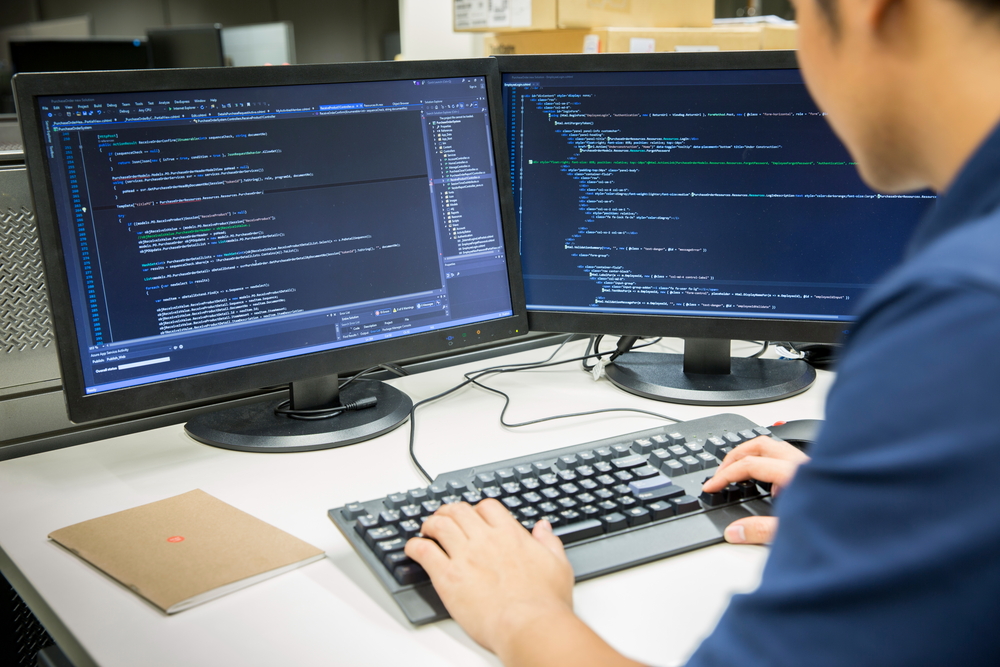It’s not what people think of first when they hear the word cheating but it’s happening and it’s a problem, writes Turnitin executive, Anna Borek, Director, Academic Partnerships, Turnitin.
Can your institution confidently determine whether the computer programming assignments students have turned in are their own work, a collaborative effort or something they’ve copied without attribution from a third party?
While an essay or report that contains more than a modicum of borrowed material is relatively easy to identify using AI-driven anti-plagiarism software, clocking a student who has utilised plagiarised source code can be a somewhat trickier proposition.
Recent reports from the US suggest programming plagiarism is happening and not infrequently either. According to a 2017 New York Times article, a fifth of students enrolled in computer science at one Ivy League university were suspected of cheating. There’s no reason to think their Australian counterparts would deviate from the trend.
Of course, the ready availability of open source software – code that programmers and businesses are legally able to access and incorporate into their own programs and products – can make it easy, and tempting, for students to utilise the efforts of others. And for some computing students, the collegiate nature of the programming profession complicates matters. In the real world, programmers typically work in teams to create and enhance applications, meaning it can blur the lines of what’s acceptable and what is not.
So, how can Australian education providers combat programming plagiarism and encourage their computing and ICT students to submit tasks that are entirely their own work? Here are some ways we’ve seen institutions tackle the issue effectively, at home and abroad.
Clear cut policies
Whether students are writing essays, sitting exams or crunching code, creating a culture of integrity begins with defining what the rules are, and the consequences that will ensue, should students fail to follow them. Developing a comprehensive academic integrity policy which clearly defines your position on the use of externally developed code, delineate the lines and makes it easier for students to determine whether their actions could see them end up in hot water.
Model the right methods
Students are more likely to produce original work if educators demonstrate how it’s done. Conducting brainstorming sessions and design workshops in which classes are taught to plan and produce their own projects can inspire students to strike out for themselves and deter them from taking illicit shortcuts, by colluding with classmates or utilising the work of others.
Provide frequent feedback
Research shows students are less likely to commit academic misconduct if they feel connected to their learning institution, and their teachers and tutors. Implementing frequent feedback loops can help to create a supportive culture which encourages them to strive for academic excellence and to request help if they need it, to keep up with coursework and assessments. Breaking coding assignments into stages and setting deadlines for each stage gives educators a chance to provide constructive feedback, and students an opportunity to seek additional support if they’re struggling.
Tools to promote academic integrity
AI-driven software can play a vital role in discouraging instances of academic misconduct, including collusion and ‘code copying’. Adopting a platform that reviews student-created software for code similarities deters would-be programming plagiarists and sends a strong signal that taking credit for the work of others will not be tolerated or slip under the radar
Promoting excellence and honesty across the institution
A reputation for academic integrity is rarely acquired by accident. That’s why Australian institutions which are committed to promulgating the values of fairness, honesty and respect for learning should continue to invest in programs and practices which promote that integrity throughout the learning journey. Doing so reinforces the message that it matters, in every department, school and subject, computer science included.

Anna Borek, Director, Academic Partnerships, Turnitin


Latest posts by Education Technology Solutions (see all)
- BenQ Launches First EDLA-Certified Interactive Displays for Education with Google Mobile Services (GMS) - November 17, 2023
- How AI technology is unlocking new opportunities for educators and pathways for learning - October 11, 2023
- A Strategic Implementation of Contemporary Digital Technologies - July 11, 2023
You must be logged in to post a comment.


There are no comments
Add yours